Choosing the right ski boot soles makes or breaks your skiing experience. Here’s the deal: not all soles fit every binding, and each type works best for specific activities. Here’s a quick rundown:
- Alpine (ISO 5355): Best for downhill skiing. These hard plastic soles provide excellent power transfer but are slippery and tough to walk in. They fit most Alpine bindings but aren’t ideal for walking or mixed terrain.
- GripWalk (ISO 23223): A hybrid option for resort skiing with better walking comfort and grip. They require GripWalk-compatible bindings.
- Touring (ISO 9523): Designed for backcountry skiing. These have grippy rubber soles and work with tech bindings but sacrifice some downhill performance.
Getting the wrong sole-binding combo can mess with your safety and performance. For a hassle-free option, Snowfeet Mini Ski Skates let you skip specialized boots entirely and use your regular winter footwear. They’re compact, easy to use, and cost less than traditional setups.
Quick Comparison:
| Sole Type | Material | Binding Compatibility | Best Use | Key Strengths | Weaknesses |
|---|---|---|---|---|---|
| Alpine | Hard plastic | Alpine bindings | Downhill skiing | Power transfer, edge control | Poor walkability, slippery |
| GripWalk | Rubber, rockered | GripWalk/MNC bindings | Resort skiing | Walking comfort, grip | Needs specific bindings |
| Touring | Rubber, rockered | Tech/frame AT bindings | Backcountry skiing | Uphill grip, lightweight | Limited downhill power, bulkier |
Snowfeet simplifies everything by letting you skip the compatibility headaches. Whether you’re skiing, sledding, or just playing in the snow, they work with your usual boots. Plus, they’re compact and affordable, starting at $150.
1. Alpine Soles (ISO 5355)
Material and Design
Alpine soles are made from tough plastic, giving them a flat sole profile - something skiers have come to expect from traditional downhill boots. This sturdy design ensures excellent durability and power transfer, but it’s not without its downsides. Walking in these boots, especially off the slopes, can feel awkward and slippery because they lack the curved shape and rubbery grip found in touring soles.
Binding Compatibility
When it comes to bindings, alpine soles are a solid choice. They work seamlessly with all ISO 9462 standard alpine bindings, as well as many systems like Multi-Norm Certified (MNC) and GripWalk bindings. If your ISO 5355 boots have metal toe fittings, they can even pair with tech bindings. This versatility makes them perfect for skiers who value precision on groomed trails.
Best Use Cases
Alpine soles shine at ski resorts and on lift-accessed terrain. They’re built for downhill skiing, offering the flat profile needed for precise edge control and smooth, responsive turns on groomed runs. If you’re all about carving on firm snow, these soles are your best bet. Just keep in mind that their focus on performance comes with some compromises.
Advantages and Limitations
| Advantages | Limitations |
|---|---|
| Excellent power transfer and stability | Not compatible with touring or hybrid bindings |
| Reliable release values for safety | Slippery on smooth surfaces like tile floors |
| Works with most traditional alpine bindings | Hard plastic makes walking uncomfortable |
There’s one more thing to note: if your alpine soles wear out, they need certified replacements to ensure your bindings work properly and keep you safe on the slopes. That said, products like Snowfeet* skip this hassle entirely, as they’re designed to work with regular winter boots, sidestepping the need for specialized soles.
2. GripWalk Soles (ISO 23223)
Material and Design
GripWalk soles were introduced in 2016 by Marker to make walking in ski boots a lot more comfortable. These soles are made from advanced copolymer rubber, featuring a rounded profile and a ribbed, non-slip design. The addition of rockered rubber pads makes moving around easier, while replaceable toe and heel pads help extend their lifespan.
Binding Compatibility
Here’s the catch: GripWalk boots are designed to work specifically with bindings that display the GripWalk logo. While there’s some overlap in compatibility with traditional alpine soles, it’s crucial to double-check your bindings. Using the wrong setup can lead to improper release settings, which isn’t something you want to mess with.
Best Use Cases
GripWalk soles shine in resort settings, especially when you’re often walking between runs. They make those quick treks to the lodge or lift a lot more comfortable. For a simpler alternative, Snowfeet* offers a solution that skips the compatibility issues altogether.
Advantages and Limitations
| Advantages | Limitations |
|---|---|
| Easier and more comfortable walking compared to alpine soles | Only compatible with bindings designed for GripWalk |
| Improved grip on slippery surfaces | Professional adjustment needed for proper safety settings |
| Works with many modern binding systems | |
| Replaceable toe and heel pads for extended use |
GripWalk soles solve many of the challenges that come with traditional ski boots, especially when it comes to walking. However, if you’re looking for ultimate convenience, Snowfeet* lets you skip specialized bindings altogether and use regular winter boots instead. It’s a game-changer for hassle-free fun on the slopes.
3. Touring Soles (ISO 9523)
Material and Design
Touring soles are crafted with backcountry adventures in mind. They come with aggressively lugged rubber for excellent grip during skinning or hiking. Their rockered shape improves walkability, while the lightweight shell design ensures they won't weigh you down on long treks.
Binding Compatibility
These soles are mostly compatible with pin-style tech bindings and some frame AT bindings that allow for adjustable toe height. This makes them a more specialized option compared to other sole types.
Best Use Cases
Touring soles shine in backcountry skiing and mountaineering. Their design prioritizes uphill performance, making them a go-to choice for skiers tackling challenging terrain. For those seeking a simpler alternative, Snowfeet* offers a unique solution - allowing you to use regular winter boots without the need for specialized bindings.
Advantages and Limitations
| Advantages | Limitations |
|---|---|
| • Excellent grip for hiking and skinning • Rockered design improves walkability • Lightweight for easier long approaches |
• Limited compatibility with only pin-style tech bindings and some frame AT bindings |
Snowfeet* simplifies the backcountry experience by removing the need for specialized boots and bindings, letting you focus entirely on your adventures. This straightforward approach sets it apart from traditional touring setups.
What Are The ISO Standards For Ski Boot Soles? - The Winter Sport Xpert
sbb-itb-17ade95
Pros and Cons Summary
When it comes to matching ski soles to your skiing style, each type has its strengths and trade-offs. Here's a quick breakdown:
Alpine soles are the go-to for precision and power on groomed runs. Their hard plastic construction ensures excellent edge control and efficient power transfer, making them perfect for resort and downhill skiing. But there's a catch - walking in them off the slopes can feel stiff and uncomfortable.
GripWalk soles strike a balance between on-snow performance and off-snow mobility. With their rubber tread and rockered design, they make walking around parking lots and lodges much easier. However, they require GripWalk-compatible or MNC bindings, which can add to the cost.
Touring soles shine in backcountry adventures, designed for uphill efficiency and versatility. They’re great for skinning uphill and hiking, thanks to their rubber construction and tech inserts. The trade-off? They’re bulkier and don’t deliver the same downhill power transfer as Alpine soles.
| Sole Type | Material | Binding Compatibility | Best Uses | Key Strengths | Key Weaknesses |
|---|---|---|---|---|---|
| Alpine (ISO 5355) | Hard plastic, flat | Alpine (DIN) bindings | Resort/downhill | Power transfer, control | Poor walkability, less comfort |
| GripWalk (ISO 23223) | Rubber, rockered | GripWalk/MNC bindings | All-mountain/resort | Walking comfort, traction | Needs compatible bindings, cost |
| Touring (ISO 9523) | Rubber, rockered, tech inserts | Tech/MNC bindings | Backcountry/touring | Walkability, versatility | Less downhill power, bulkier |
One thing to keep in mind: mismatched soles and bindings can compromise safety. That’s where Snowfeet* steps in, eliminating this issue altogether. By allowing you to use regular winter boots, Snowfeet* simplifies your gear setup, removing the headache of sole compatibility.
While traditional brands focus on fine-tuning their sole technologies for specific uses, they still tie you to specialized boots and bindings. Snowfeet* changes the game by offering unmatched simplicity and flexibility.
Up next, find out how Snowfeet* is transforming winter sports with its revolutionary approach to convenience.
Why Snowfeet* Changes Everything
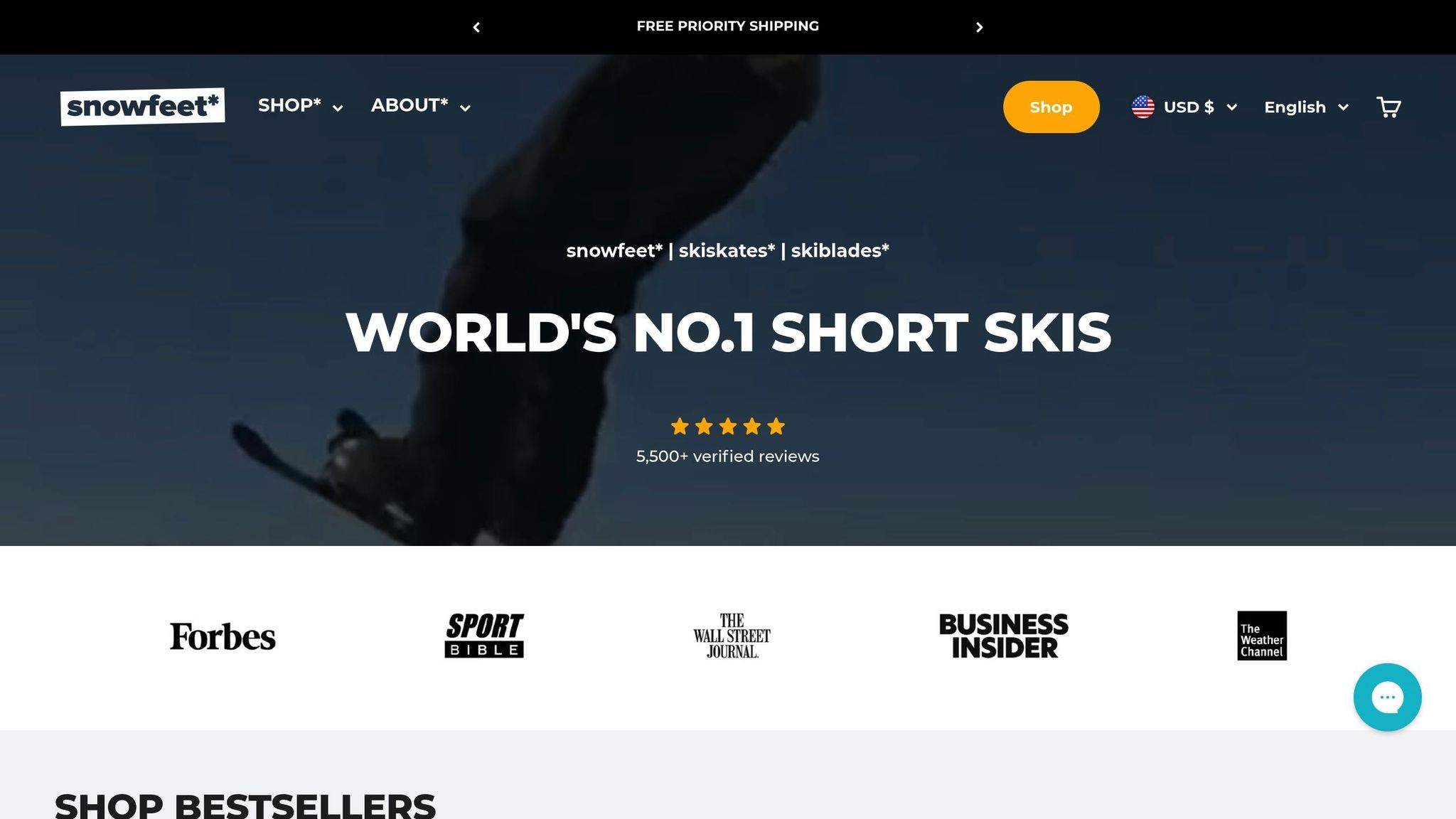
Big ski brands like Rossignol, Atomic, and Head are busy fine-tuning their boot sole tech, but let’s be honest - most of these tweaks don’t change the game. The real shift? Ditching specialized ski boots altogether. That’s where Snowfeet* steps in.
Snowfeet* flips the script. Instead of making you pick between Alpine, GripWalk, or Touring soles, their Mini Ski Skates attach directly to the winter boots you already own. Whether it’s your trusty snowboard boots, hiking boots, or everyday winter shoes, Snowfeet* skips the hassle of complicated ISO standards and works with what you’ve got.
This flexibility is a game-changer. Alpine soles lock you into resort skiing, and Touring soles are all about backcountry adventures. Snowfeet*? They’re ready for anything - cross-country trails, ski slopes, sledding hills, you name it. It’s one setup for all kinds of winter fun.
Another bonus? Portability. Traditional ski gear can feel like you’re hauling a small army’s equipment - boot bags, skis, bindings, the works. Snowfeet* products, on the other hand, are compact enough to toss in a backpack. Perfect for last-minute trips or when you’re tight on luggage space.
For those who crave a little extra performance on the slopes, Snowfeet* offers Pro-grade Skiskates. These come with a wood core construction for faster, sharper handling. And yes, they still work with both ski and snowboard boots.
Learning to use Snowfeet* is a breeze too. Forget deciphering complex specs or spending hours adjusting bindings. With their lightweight, responsive design, these mini skis are easy to pick up and enjoy - no steep learning curve required.
Maintenance? Barely a concern. Since you’re not dealing with specialized ski boots or fiddly bindings, you avoid the usual headaches. Your regular winter boots stay just as they are, and Snowfeet* is built to keep up with the action.
Let’s talk money. A solid pair of ski boots usually sets you back $300 to $600, and bindings can add another $200 to $400. Snowfeet* Mini Ski Skates start at just $150. Even their premium Skiskates, priced at $390, are a more wallet-friendly option compared to the traditional gear setup.
While big-name brands focus on tiny upgrades to old designs, Snowfeet* takes a fresh approach. They strip away the complications, making winter sports more accessible, versatile, and - let’s face it - way more fun. Snowfeet* isn’t just another piece of gear; it’s a whole new way to enjoy the snow.
Conclusion
Traditional ski setups are often a hassle. They’re tailored for specific conditions, locking you into pricey, restrictive systems. For resort skiers, Alpine or GripWalk soles paired with bindings from brands like Rossignol, Atomic, or Head are the go-to. Meanwhile, backcountry adventurers need Touring soles and specialized bindings to make uphill climbs easier and maintain control on the descent.
The problem? These setups are anything but flexible. You’re looking at multiple specialized systems, steep costs (ski boots alone can run $300–$600), and the constant headache of making sure everything is compatible. Plus, all that gear is usually designed for just one type of skiing, leaving you stuck with expensive, fragmented options.
That’s where Snowfeet* changes the game. Forget about ISO standards and matching bindings. Their Mini Ski Skates work with the winter boots you already own. No need to choose between Alpine, GripWalk, or Touring - this one setup handles it all, from ski slopes to backyard fun, and even snowy trails.
A traditional setup can easily cost $500–$1,000 or more. In contrast, Snowfeet* Mini Ski Skates start at just $150, with premium Skiskates available for around $390. It’s an affordable, no-fuss alternative to the usual ski gear.
Snowfeet* makes winter sports simpler, cheaper, and way more fun. There’s no need for complicated decisions, big upfront investments, or limits on where you can enjoy the snow. While traditional brands stick to the same old designs, Snowfeet* offers something refreshingly different - freedom to enjoy winter your way. It’s a whole new way to experience the season.
FAQs
What’s the difference between Alpine, GripWalk, and Touring ski boot soles, and how do they affect performance and binding compatibility?
Alpine ski boot soles (ISO 5355) are the go-to option for downhill skiing. They’re stiff, built to deliver maximum power transfer, and perfect for high-speed runs on groomed slopes. However, they’re not designed with walking in mind and are only compatible with standard alpine bindings.
GripWalk soles (ISO 23223) bring a modern twist to ski boots. With their curved, rubberized design, they offer better traction and make walking a lot easier. While they can work with some alpine bindings, they’re at their best when paired with GripWalk-compatible bindings, striking a balance between comfort and performance.
Touring soles (ISO 9523) are tailored for backcountry skiing. Lightweight and more flexible, these soles focus on uphill efficiency and mobility. They’re made to work with specialized touring bindings, giving skiers the safety and adaptability they need for off-piste adventures.
If traditional ski boots and bindings feel like too much of a hassle, you might want to check out Snowfeet products, like skiblades or skiskates. These eliminate the need for bulky ski boots entirely, offering a convenient and versatile way to tackle all kinds of terrain.
What makes Snowfeet* a more affordable and versatile option compared to traditional ski gear?
Snowfeet*: A Budget-Friendly, Portable Alternative to Traditional Skis
Snowfeet* brings a fresh twist to hitting the slopes, offering an affordable, portable, and simple alternative to traditional ski gear. Priced at about $150, these skiskates cost just a fraction of what you’d spend on a full ski setup, which can easily run between $800 and $1,500. Plus, unlike skis from big names like Rossignol or Atomic, Snowfeet* skips the need for bulky bindings or specialized boots.
What makes Snowfeet* stand out is their compact and lightweight design. You can use them with your regular winter shoes or snowboard boots - no extra gear required. This makes them a great option for beginners, casual skiers, or anyone who wants a low-maintenance way to enjoy the slopes. Their thoughtful design means you get flexibility and convenience without the usual hassle or cost of traditional skiing gear.
What factors should I consider when choosing ski boot soles for safety and performance?
When choosing ski boot soles, making sure they work with your bindings is a must. Different sole types - like Alpine, GripWalk, and Touring - are designed to match specific binding systems. This compatibility isn’t just about performance; it’s also a big part of staying safe on the mountain.
You’ll also want soles with solid grip and traction. This can save you from slipping on icy patches or uneven ground. Comfort is another biggie. Your boots should feel snug without being too tight - no one wants numb toes on the slopes! And don’t forget about the stiffness or flex of the sole. Whether you’re cruising groomed trails or heading into deep powder, the right flex can make all the difference.
If you’re looking for something simpler, Snowfeet’s skiblades and skiskates might be your answer. These clever alternatives skip the need for traditional ski boots altogether. They’re lightweight, easy to use, and perfect for casual skiers who want to hit the slopes without dealing with bulky gear.

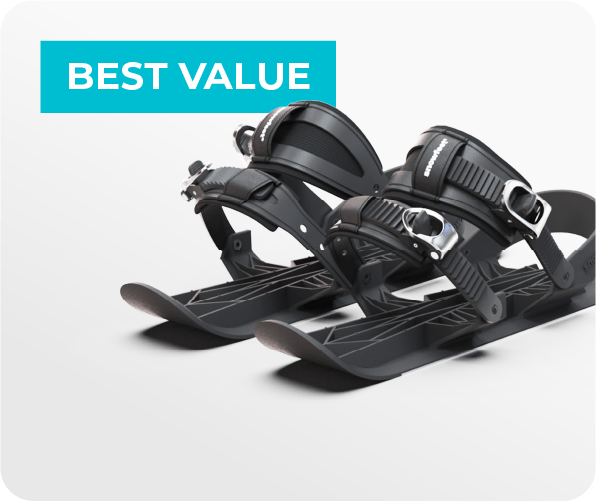



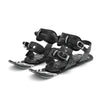
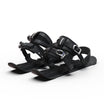
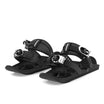

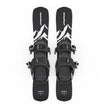
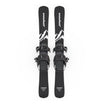

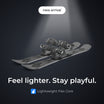
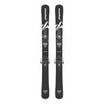
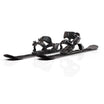
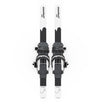


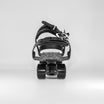

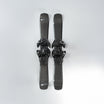



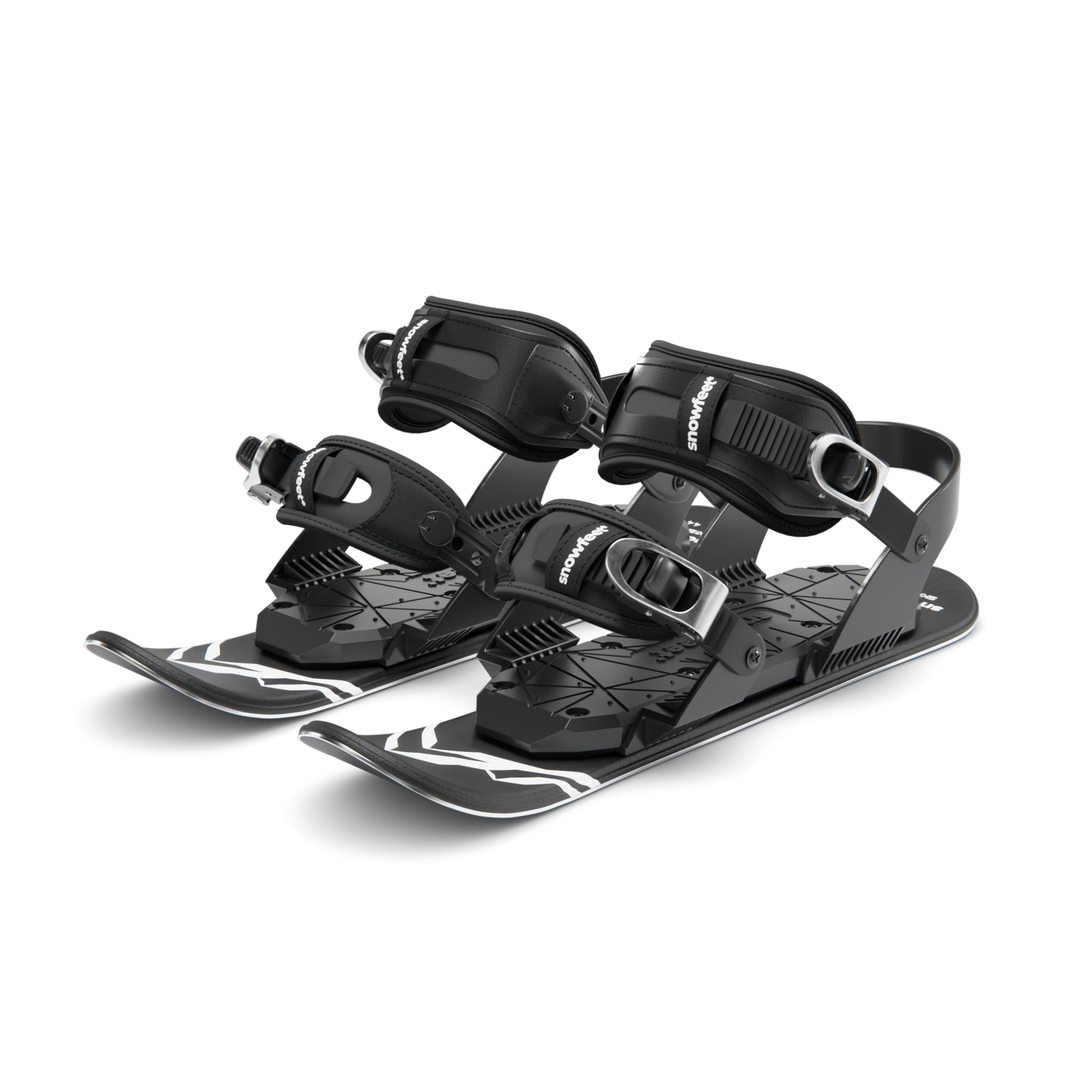
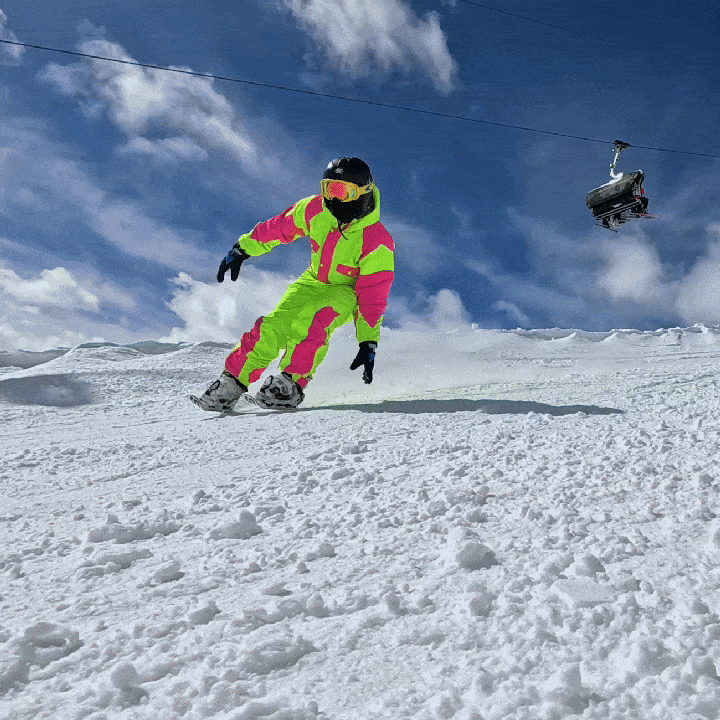
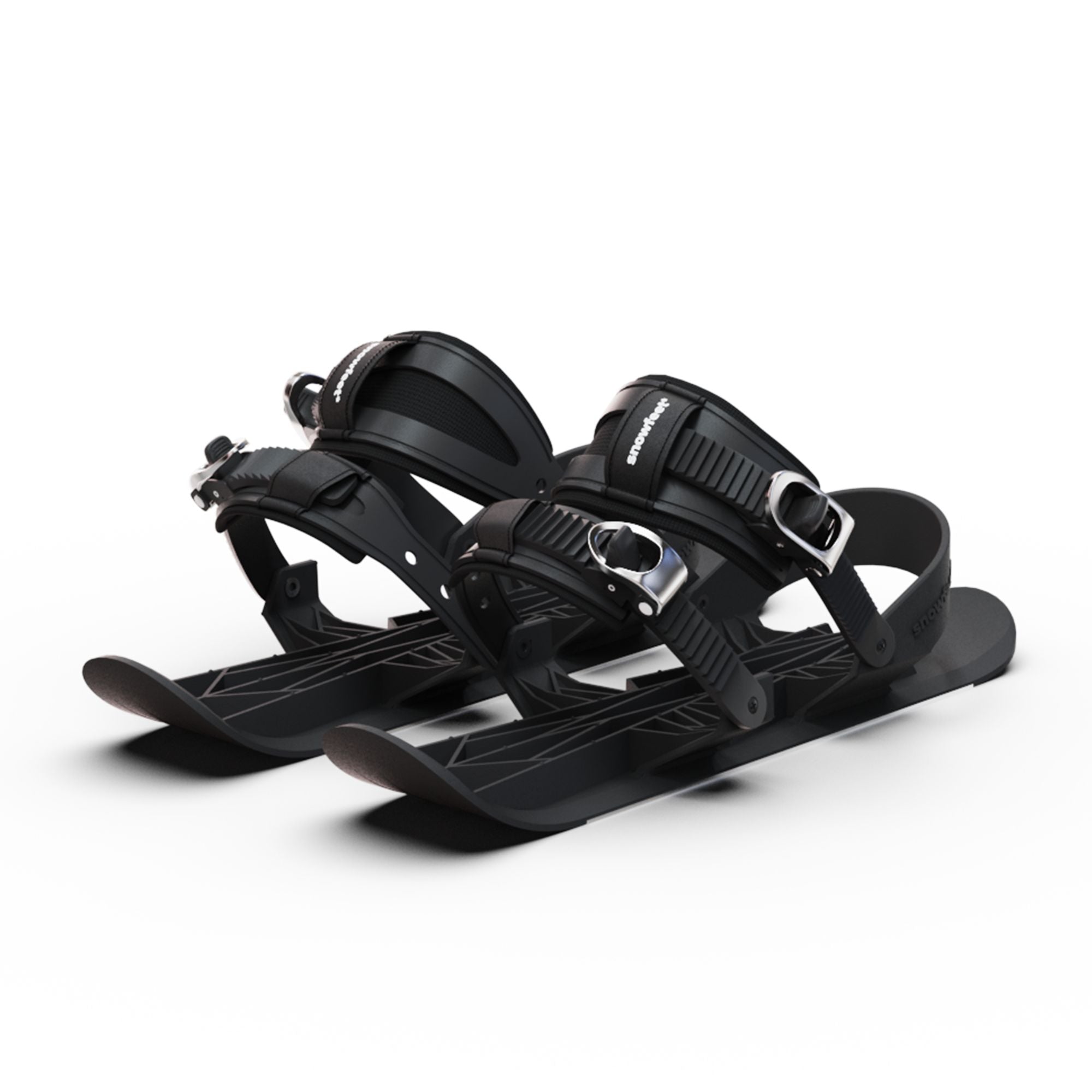
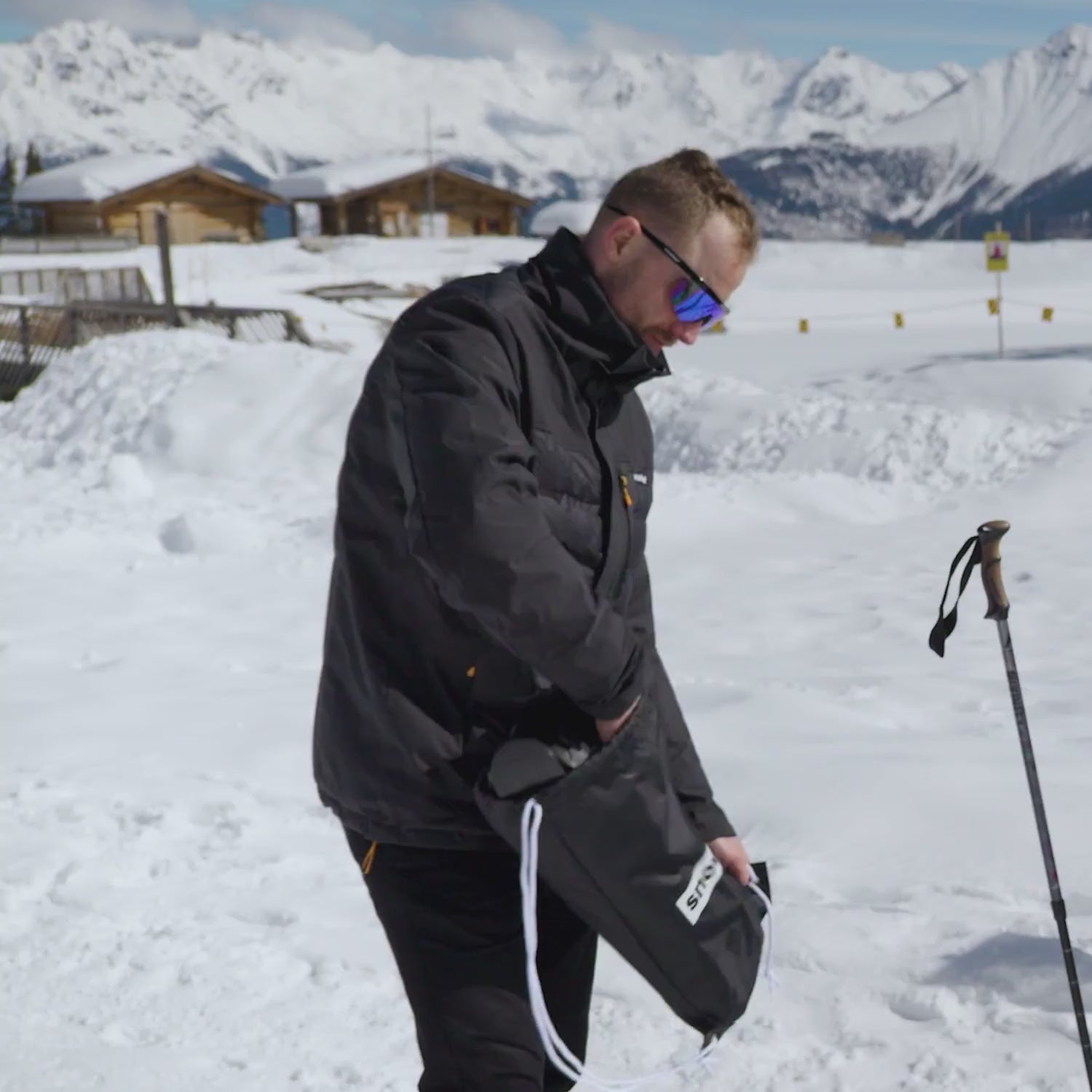
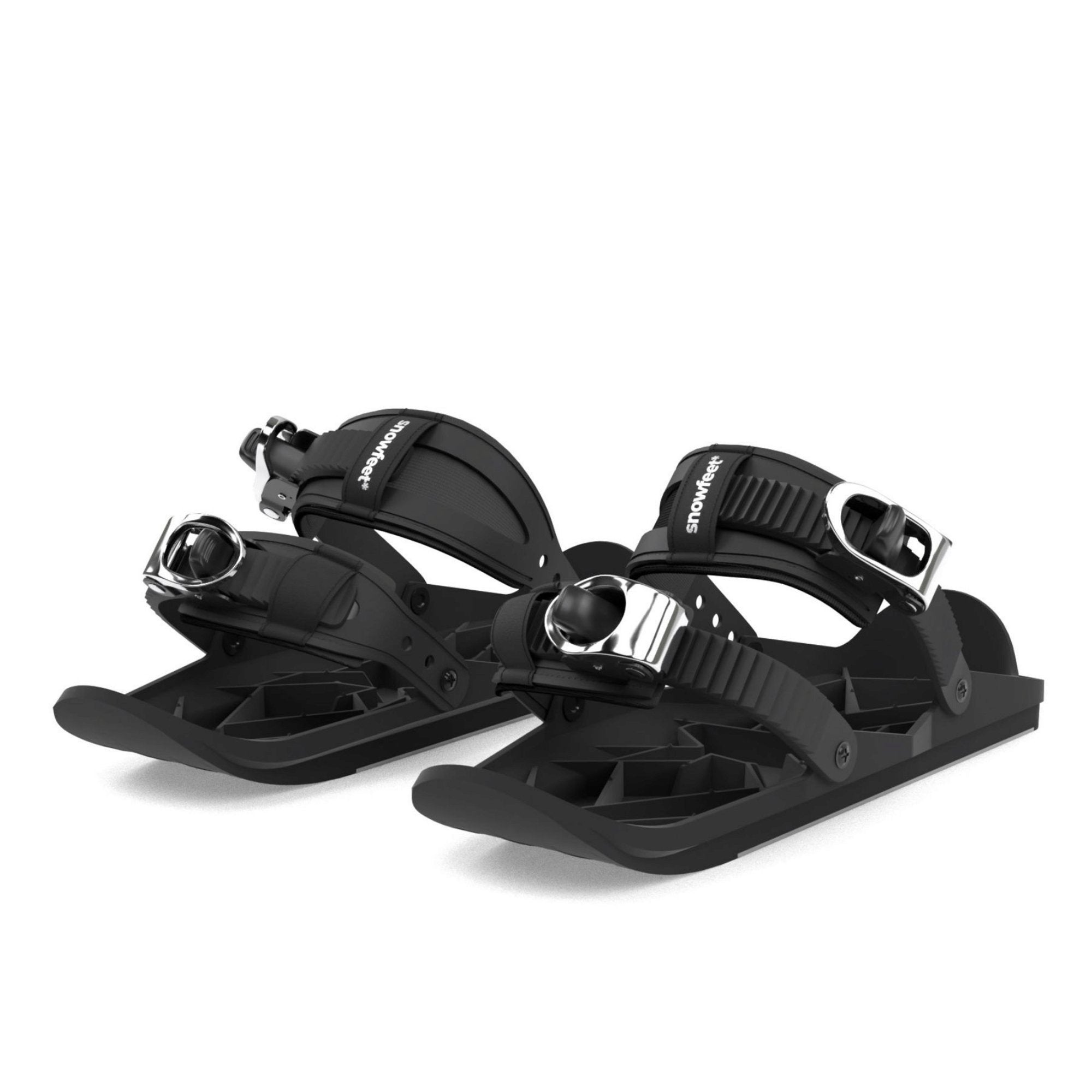
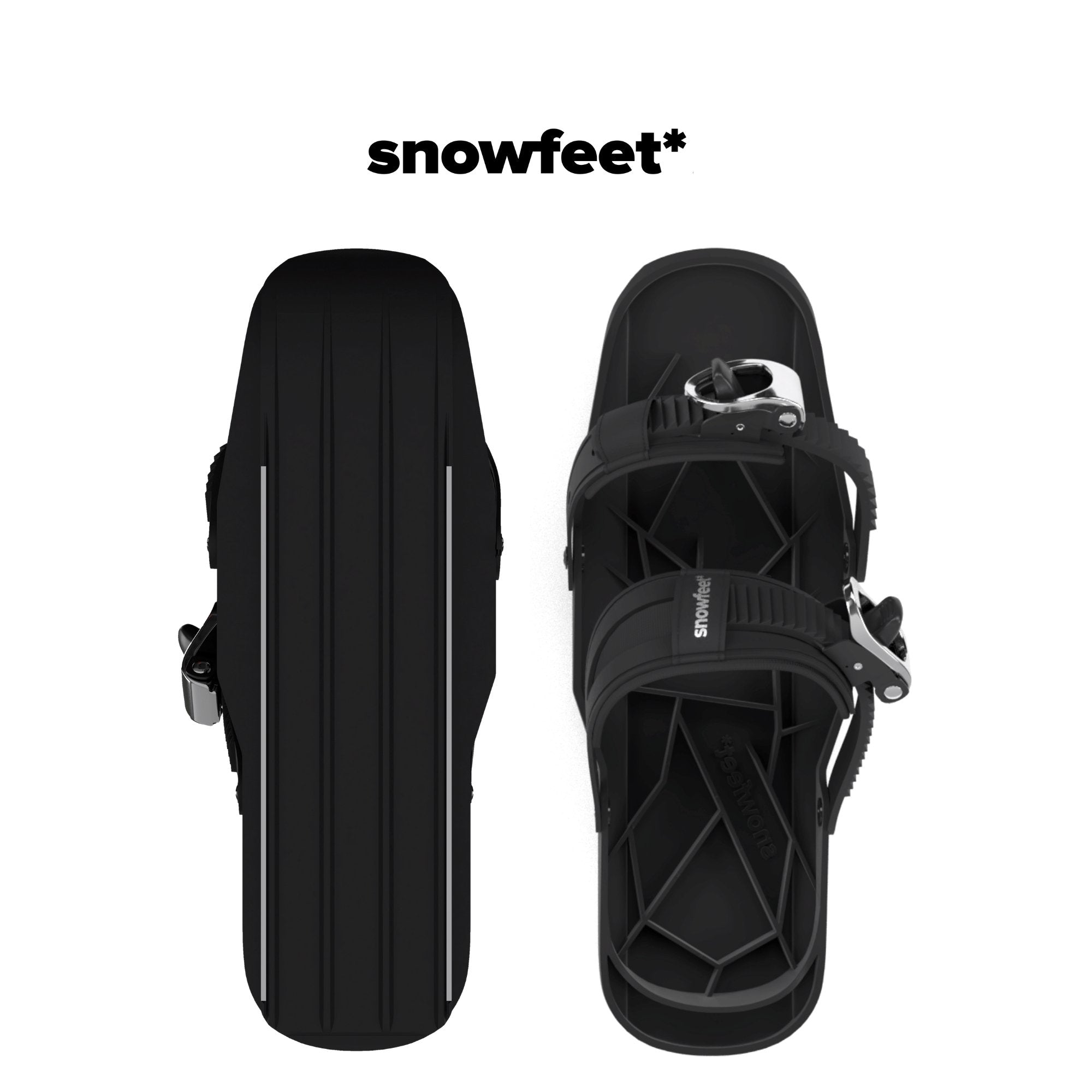
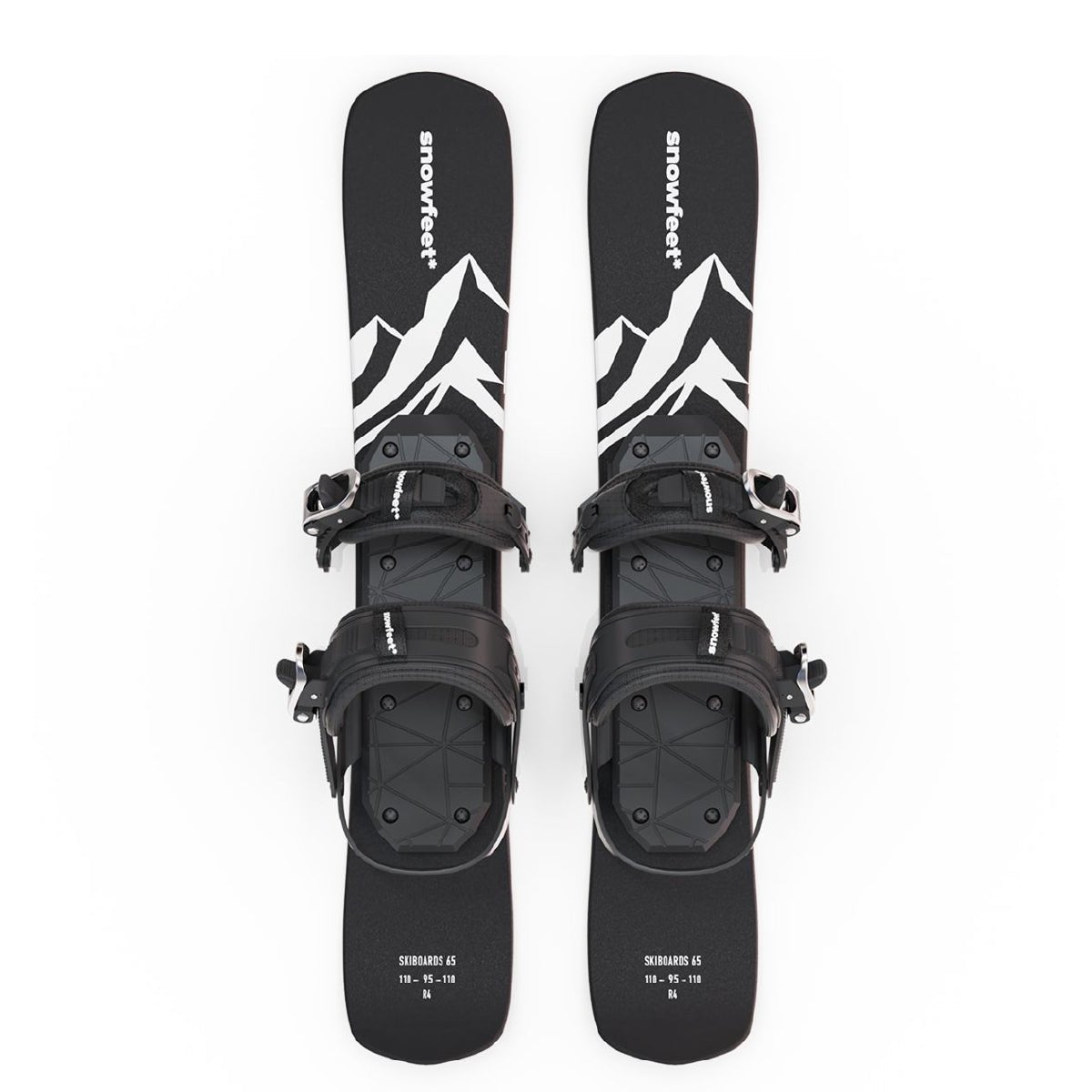

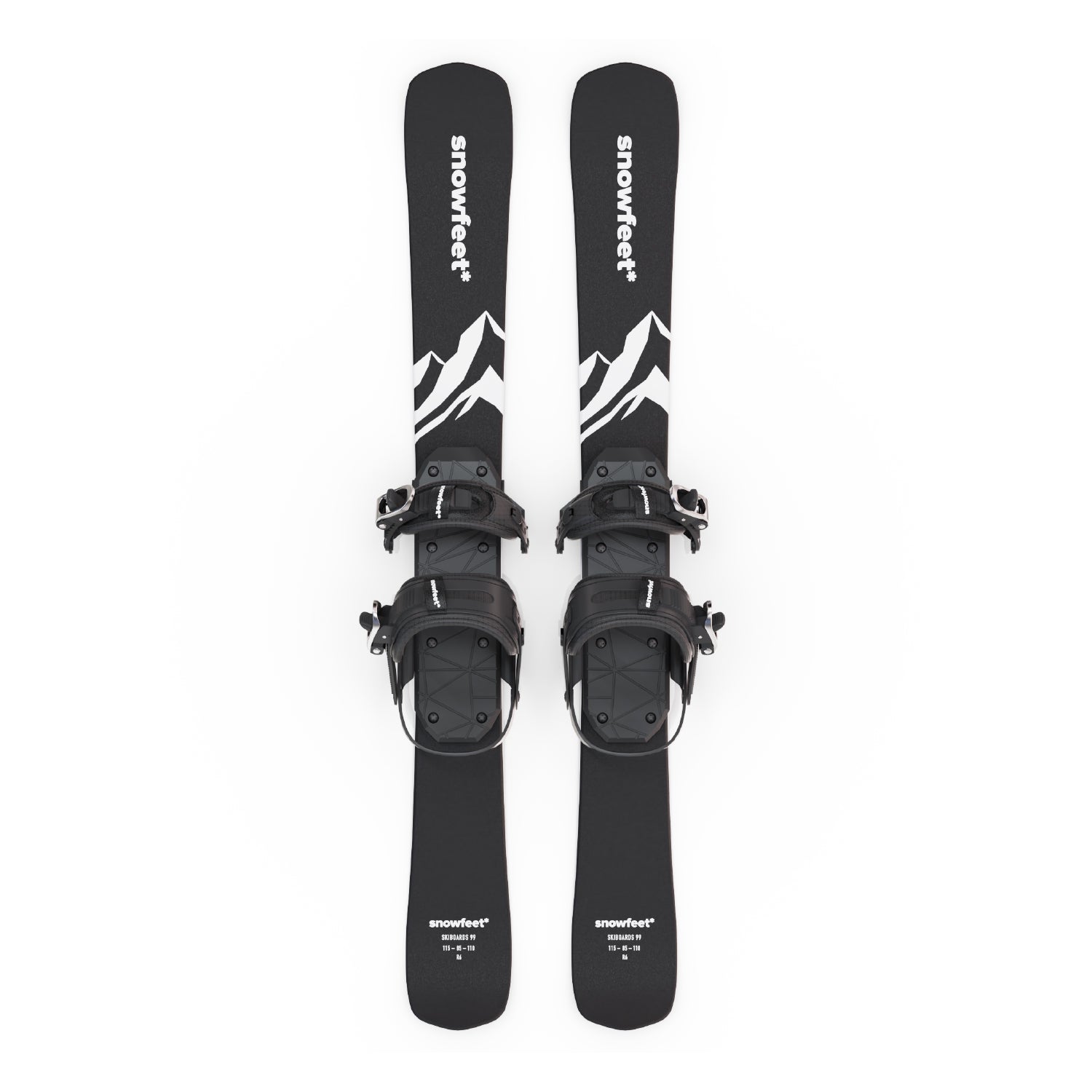
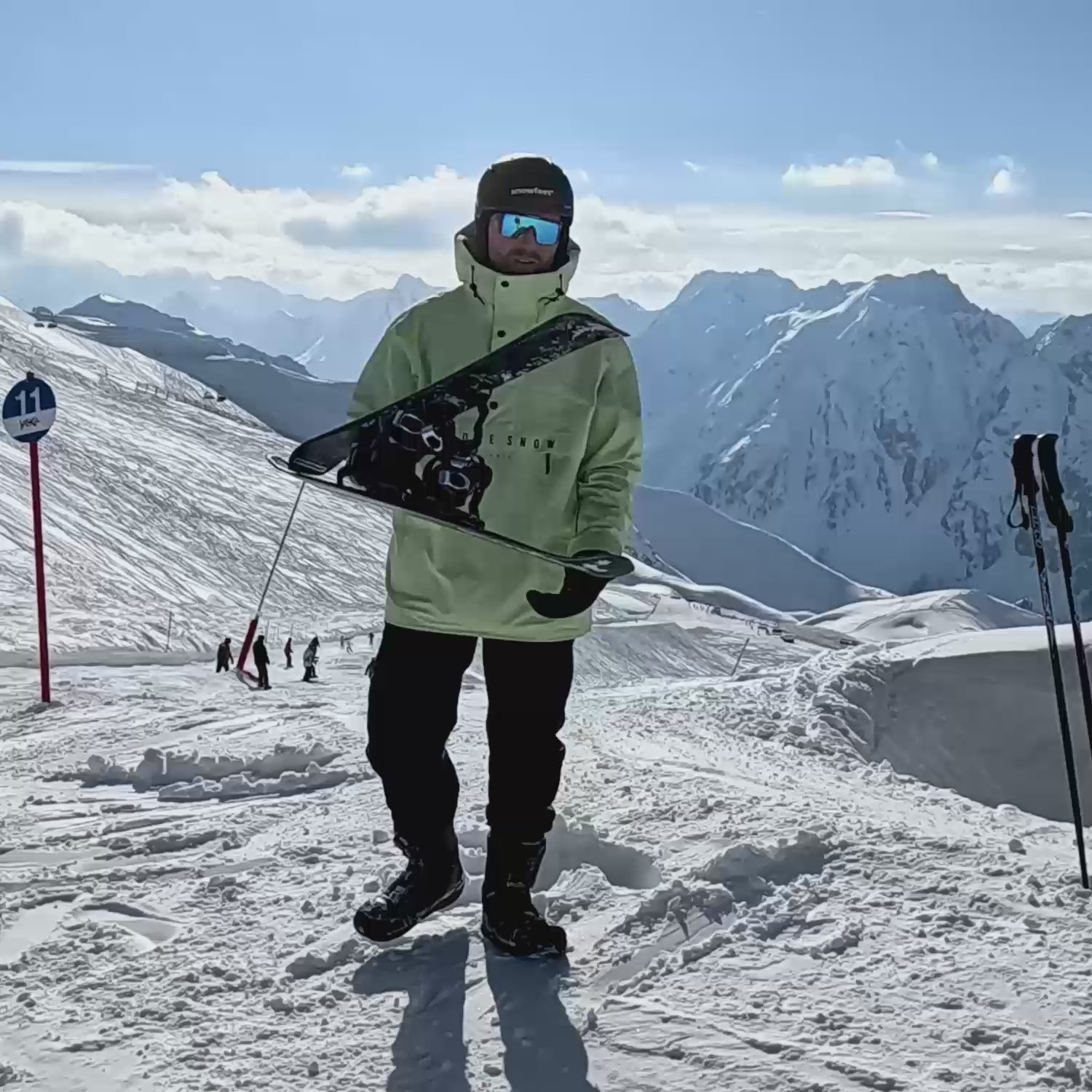
Leave a comment
This site is protected by hCaptcha and the hCaptcha Privacy Policy and Terms of Service apply.